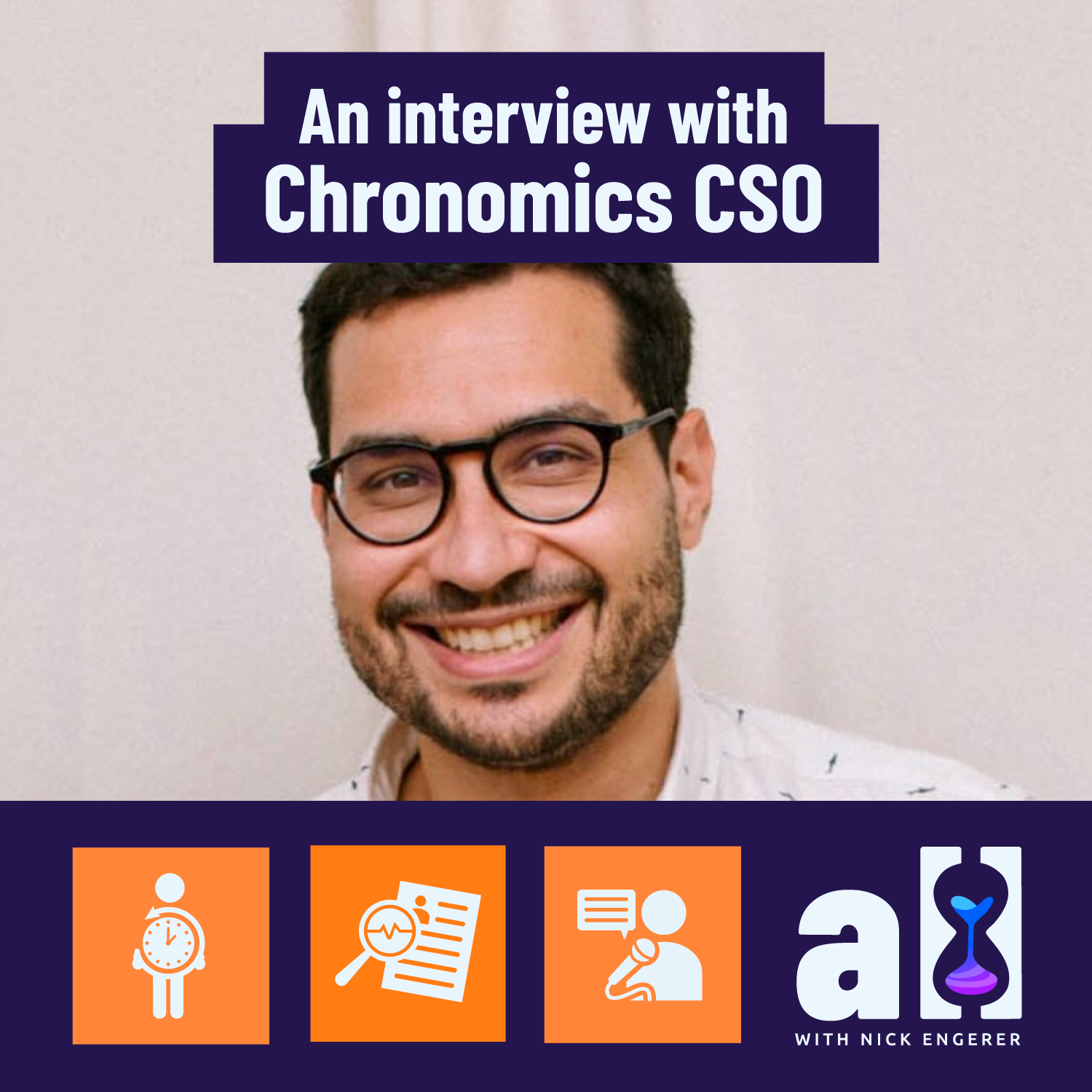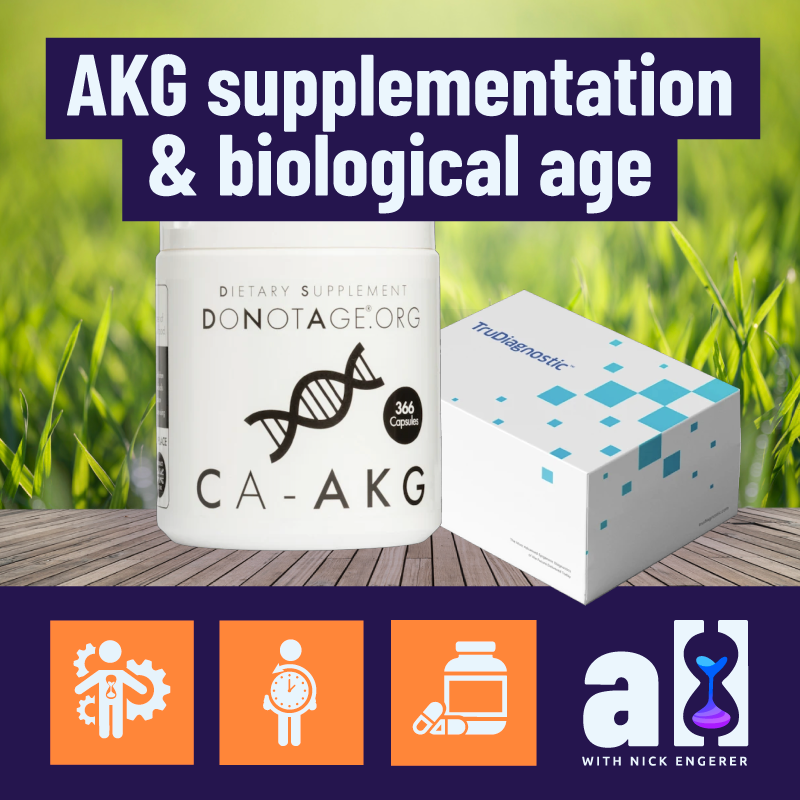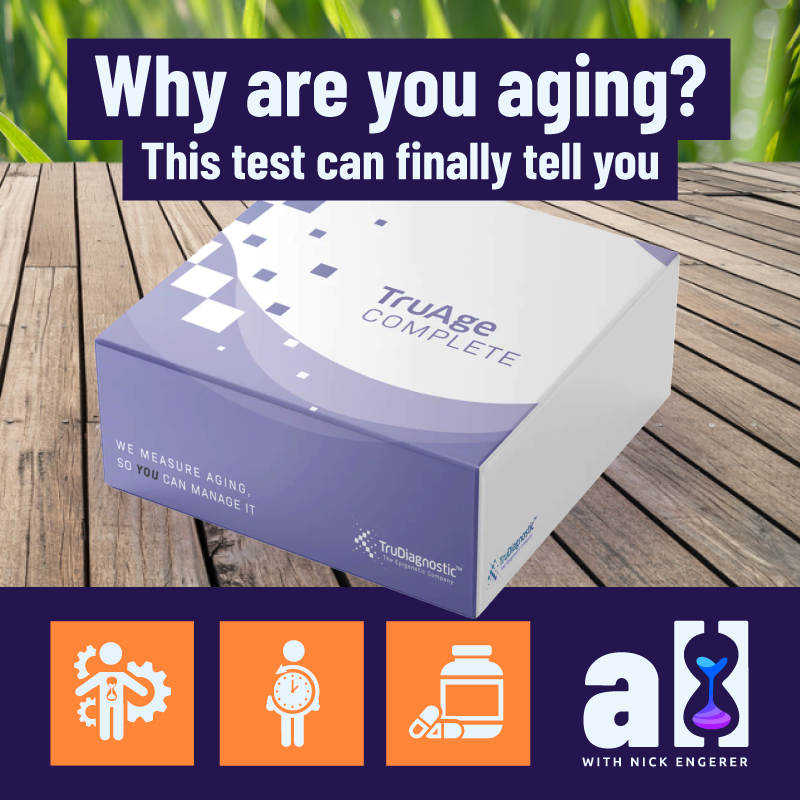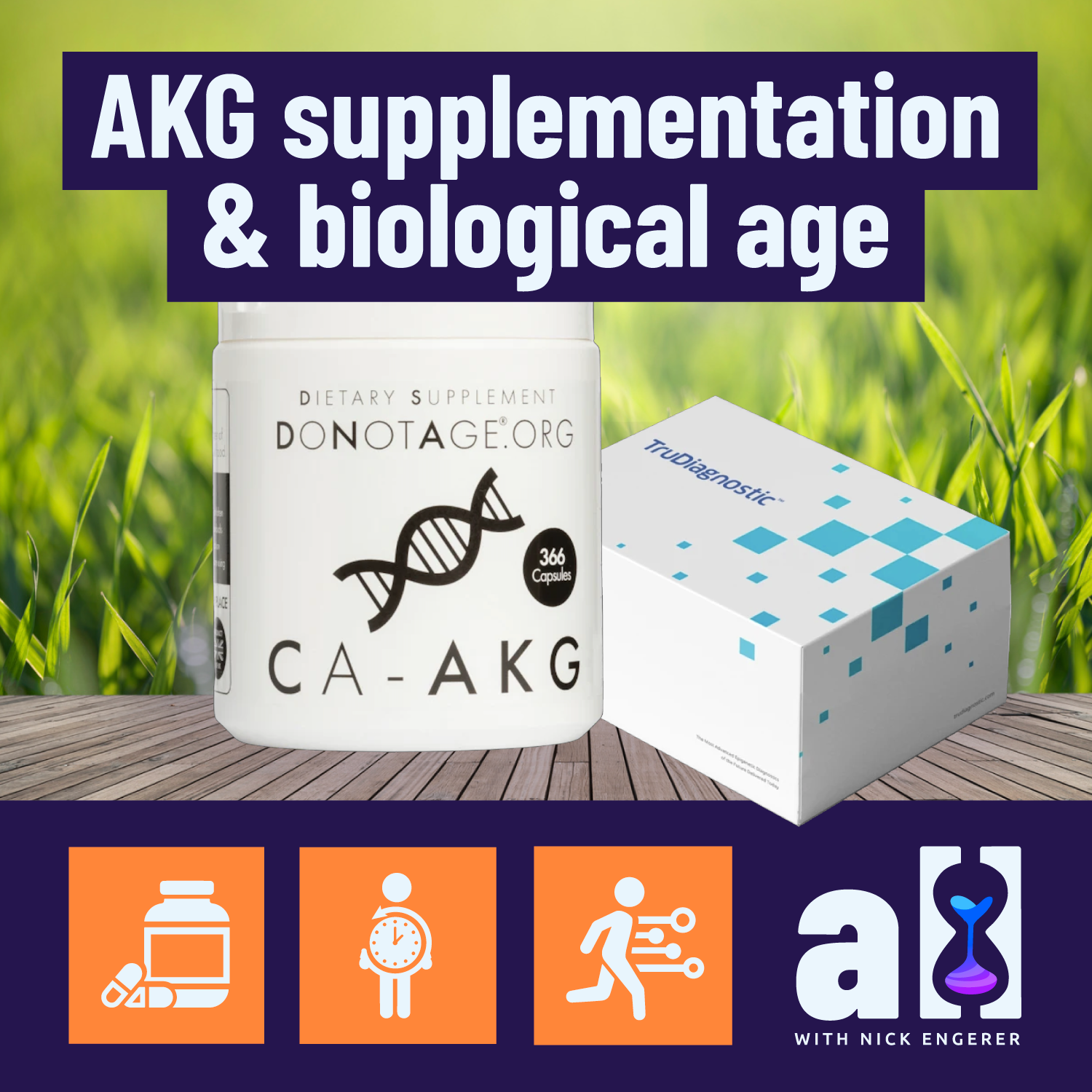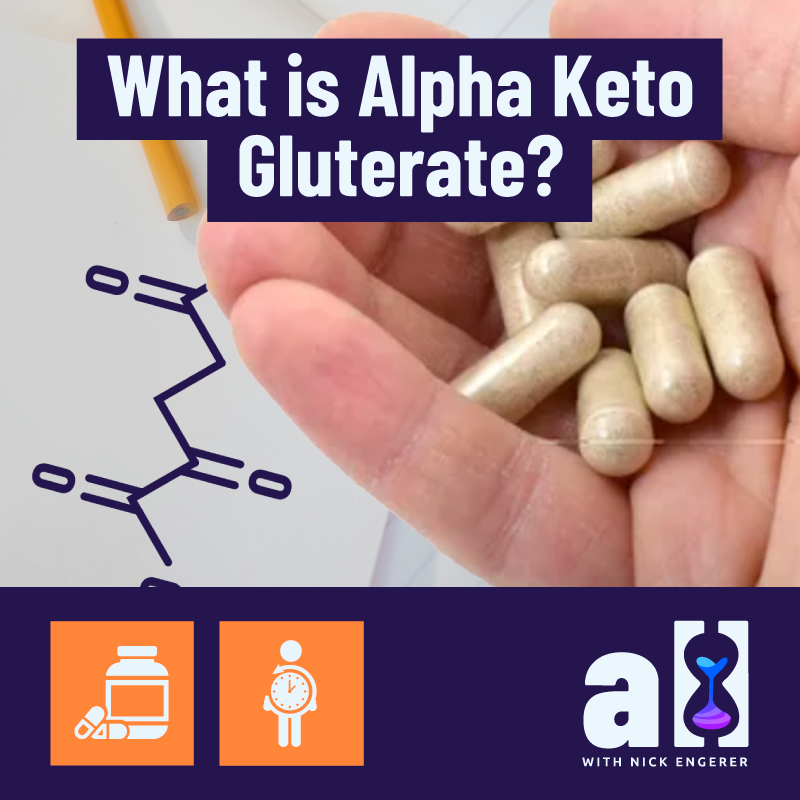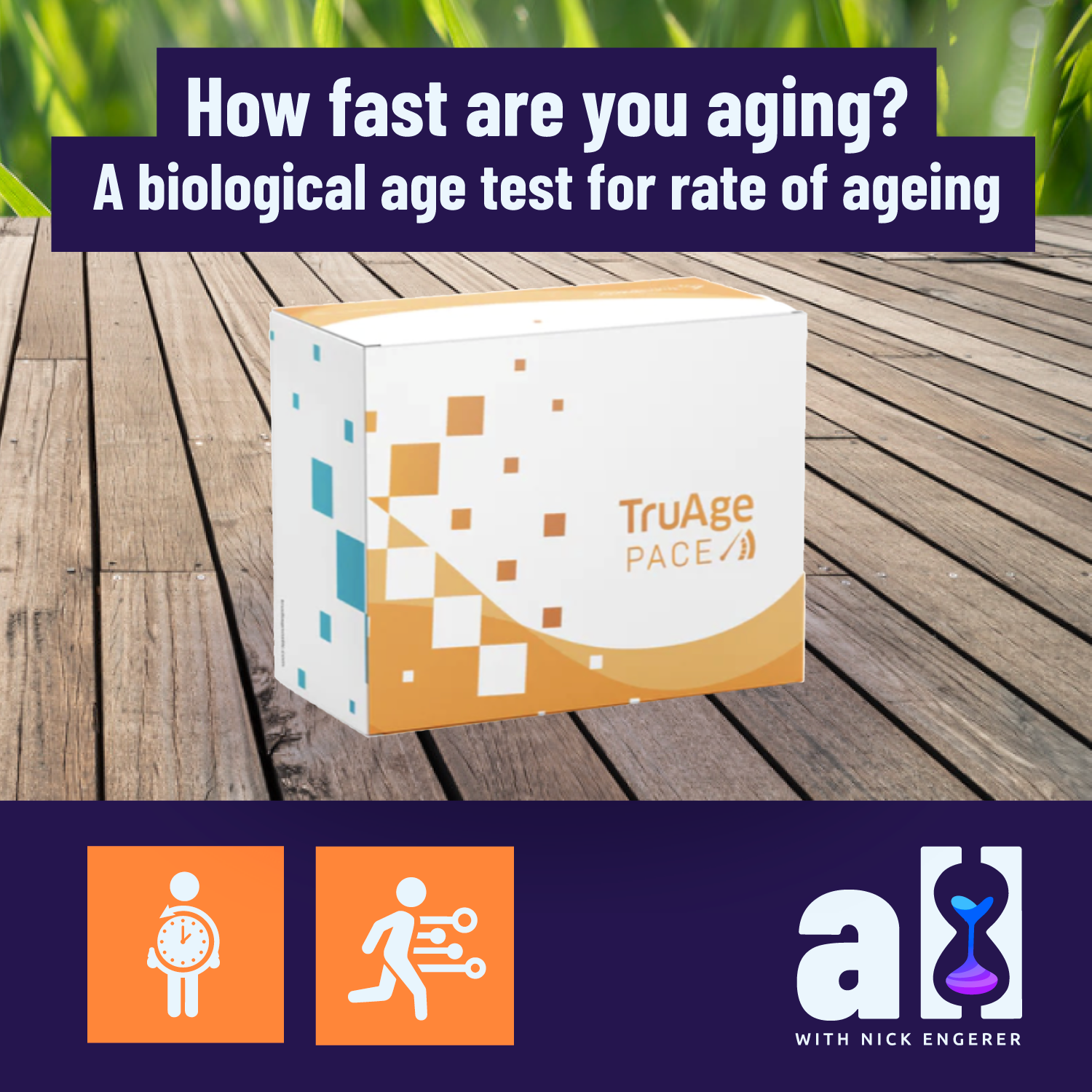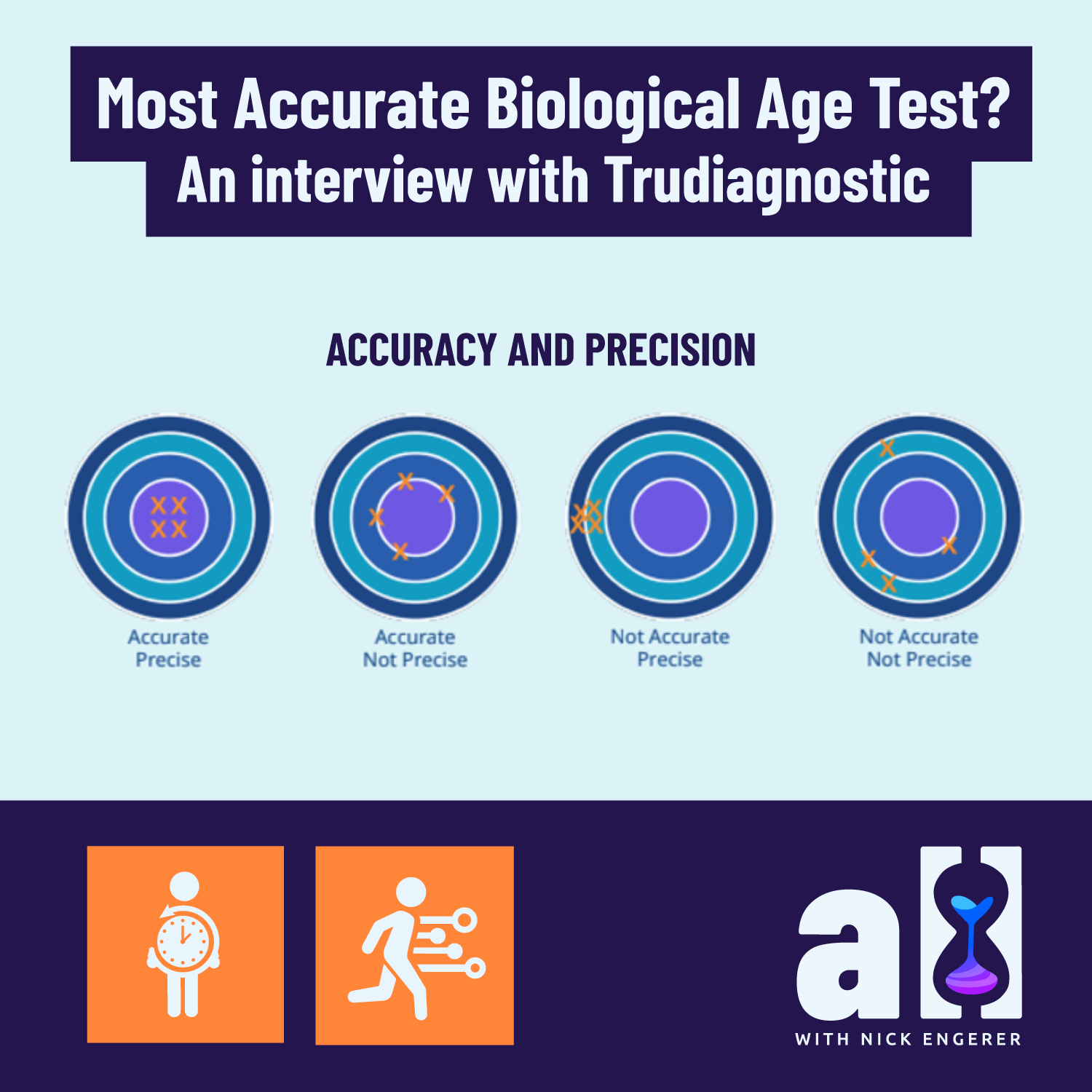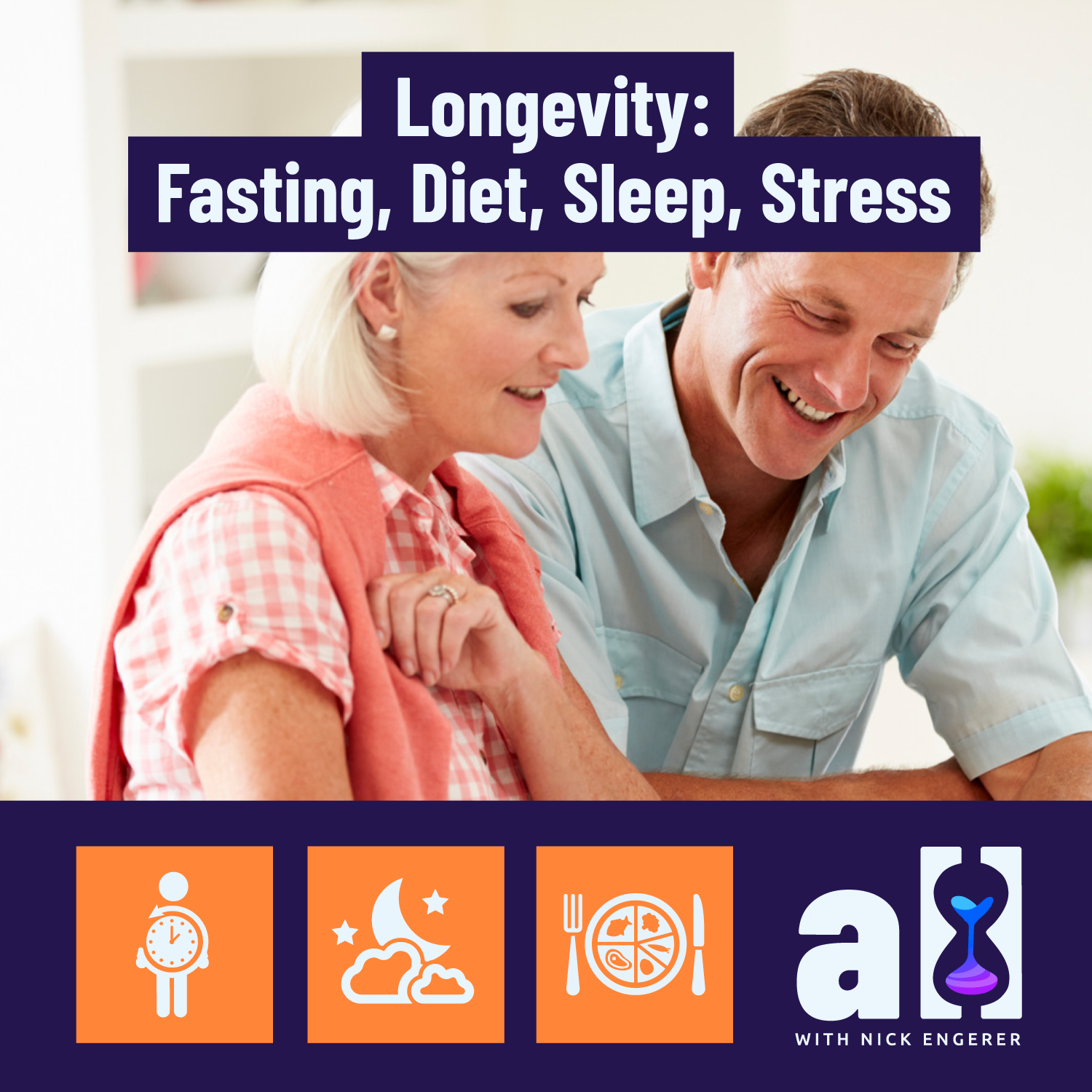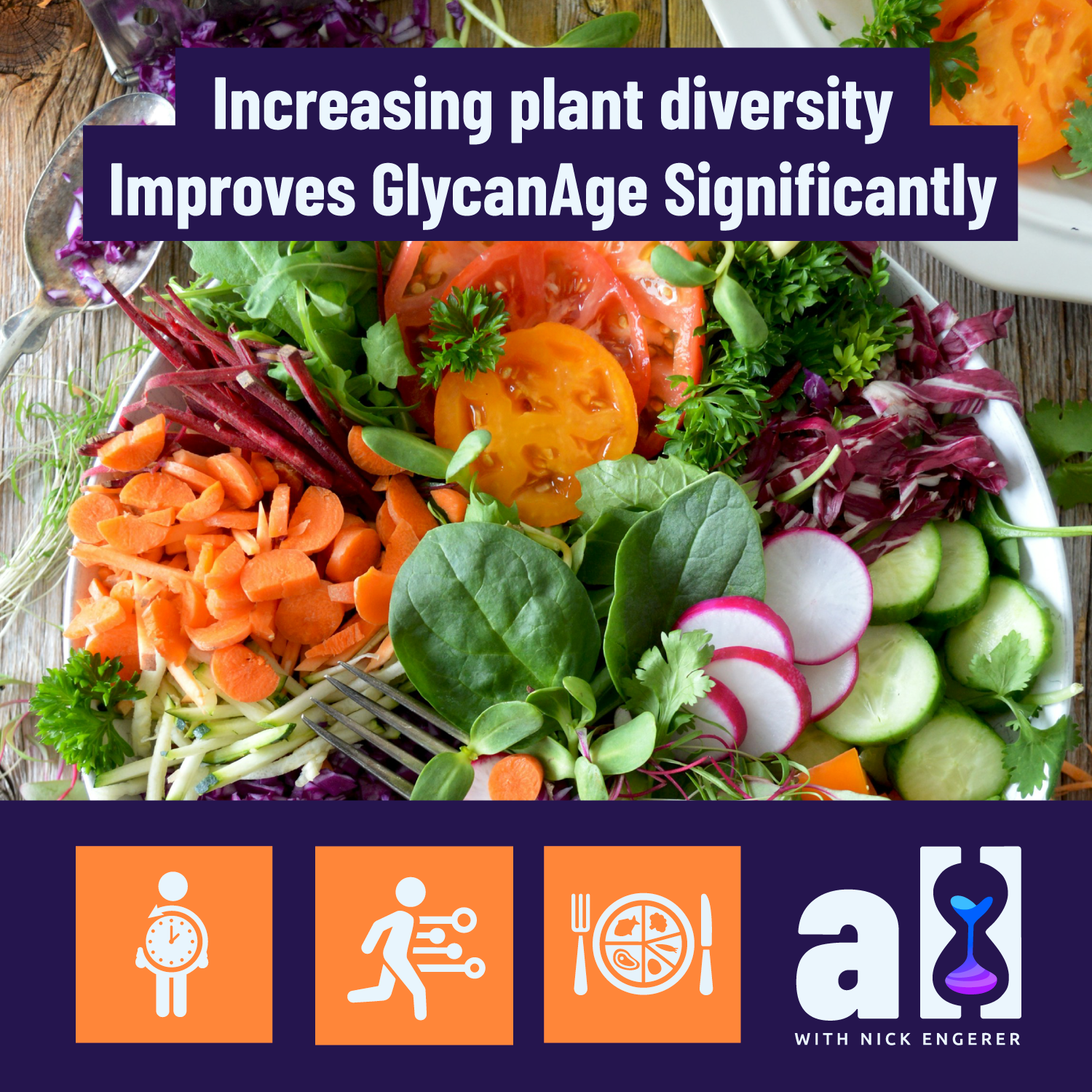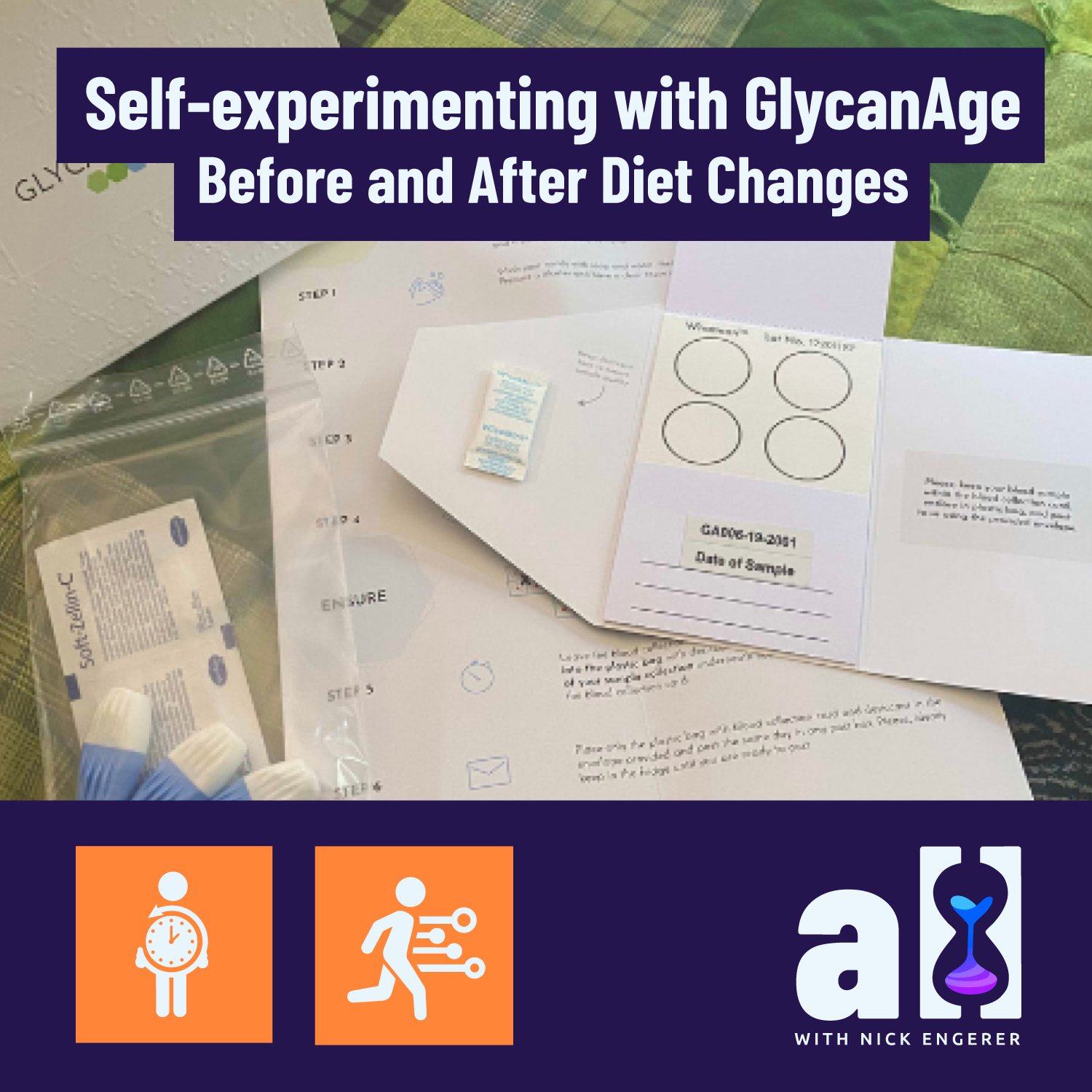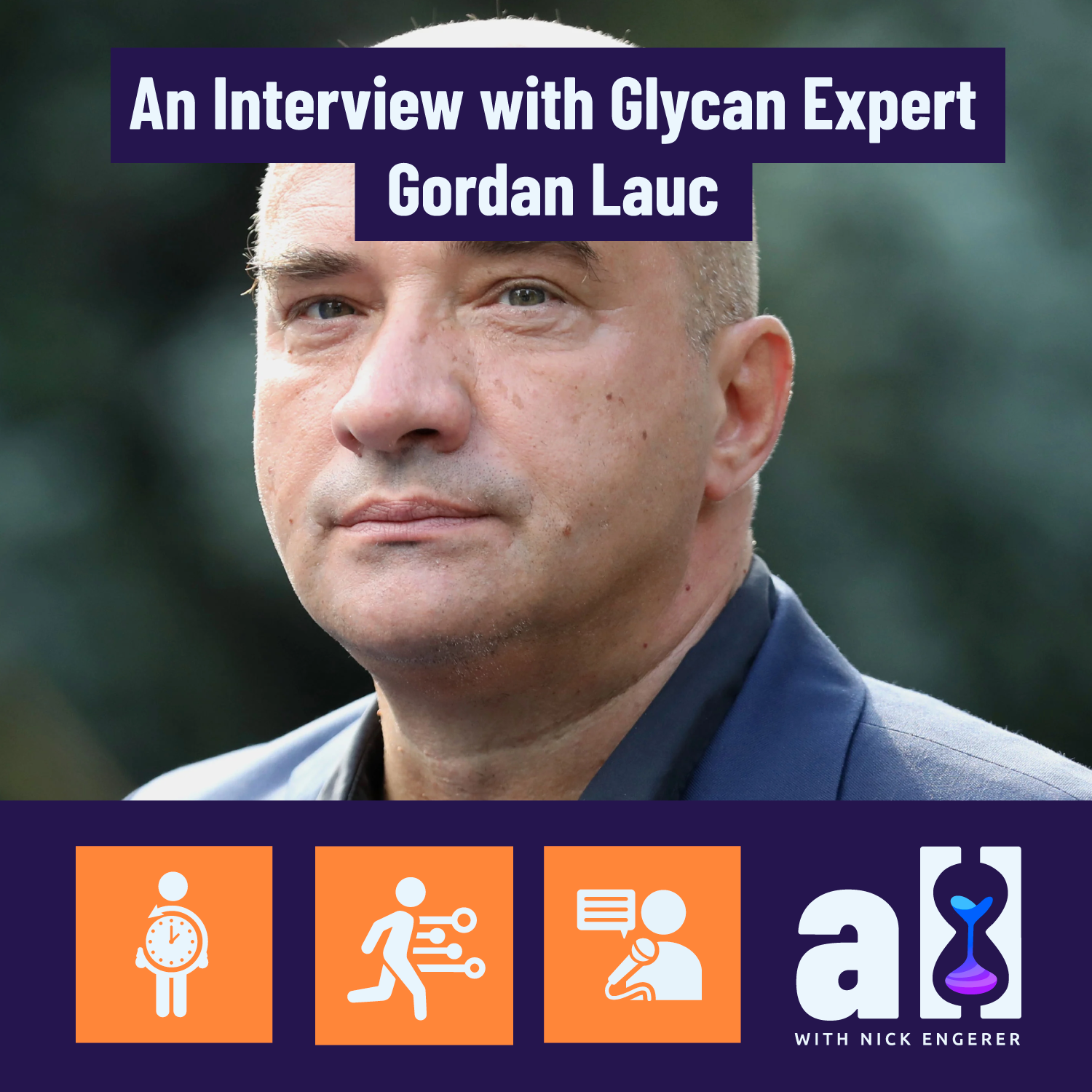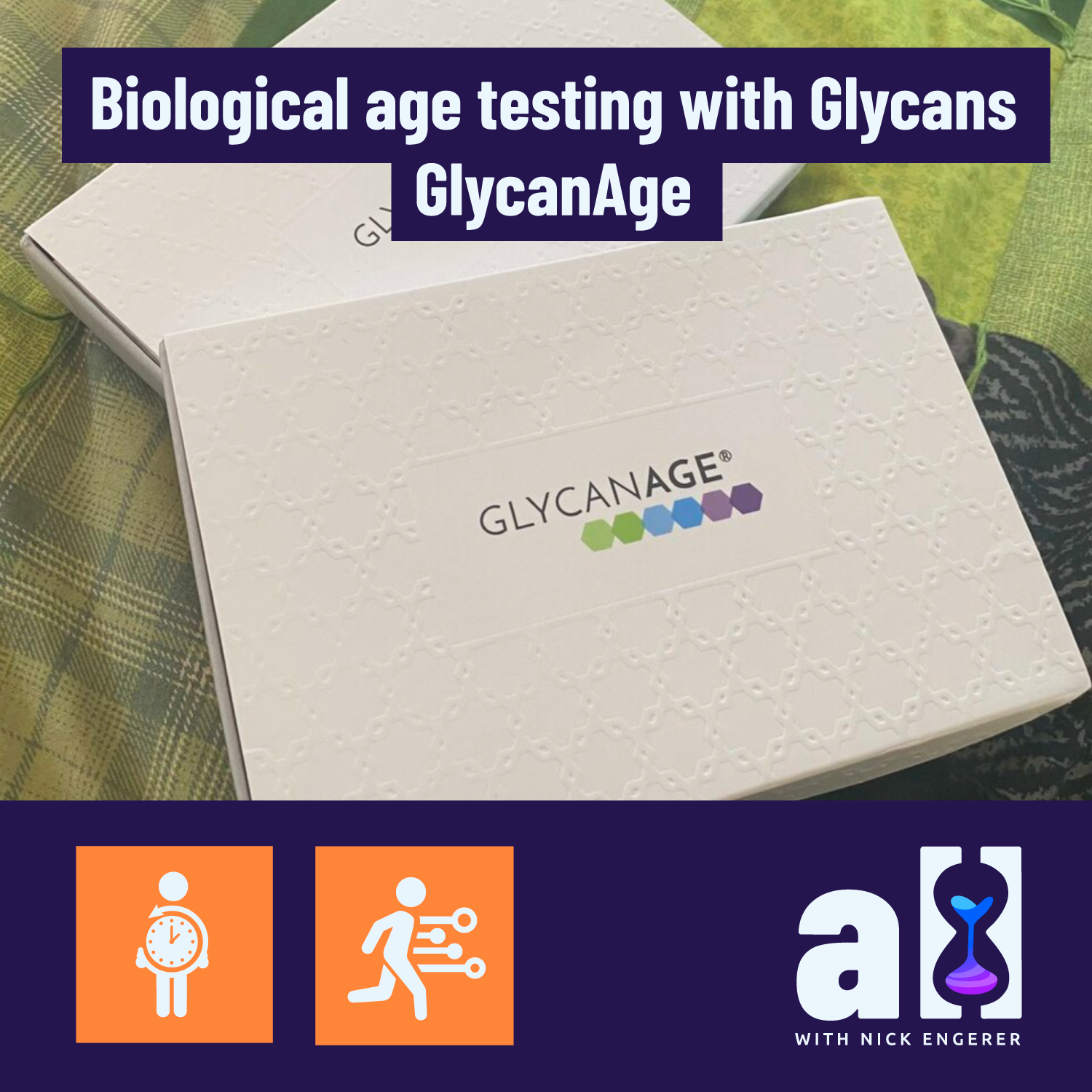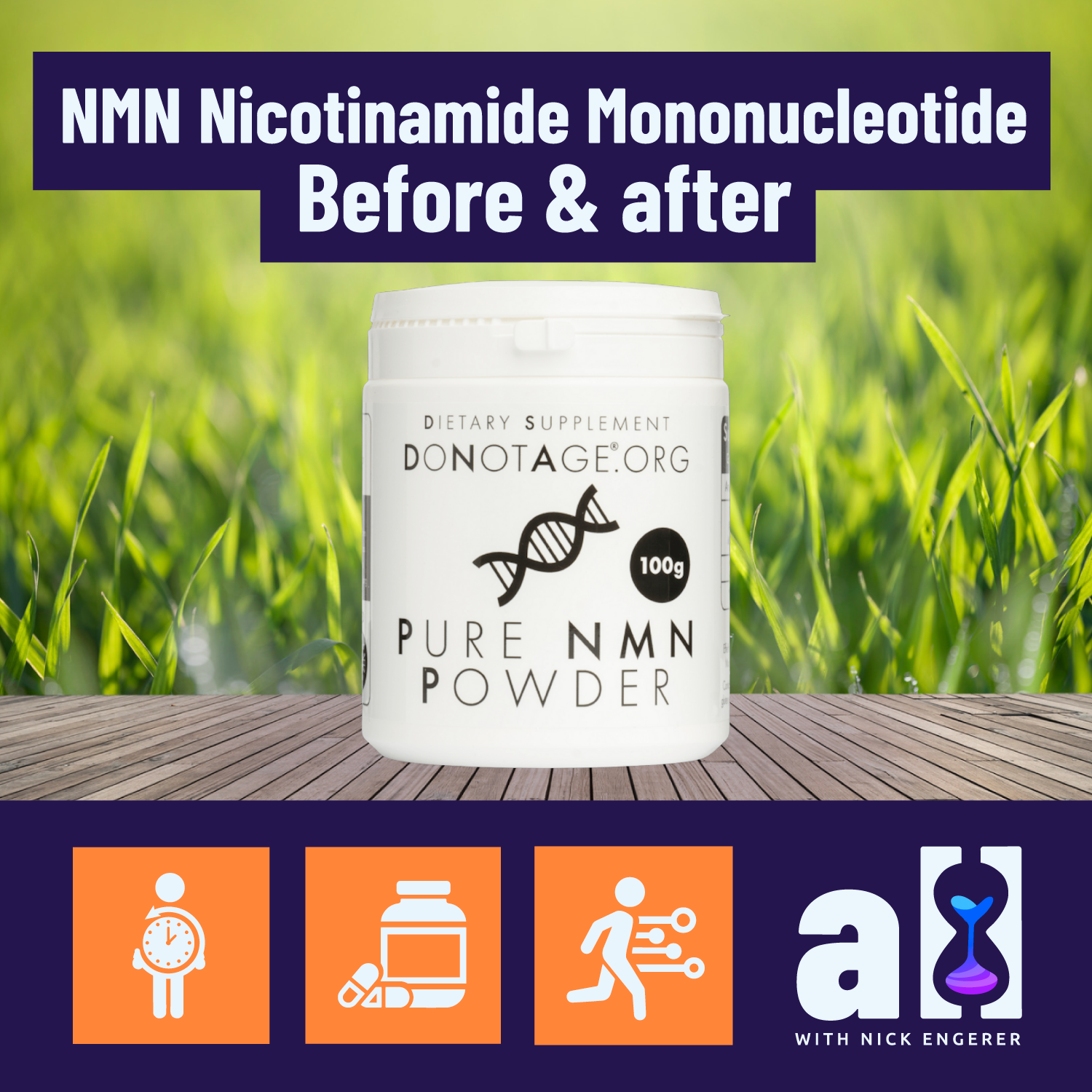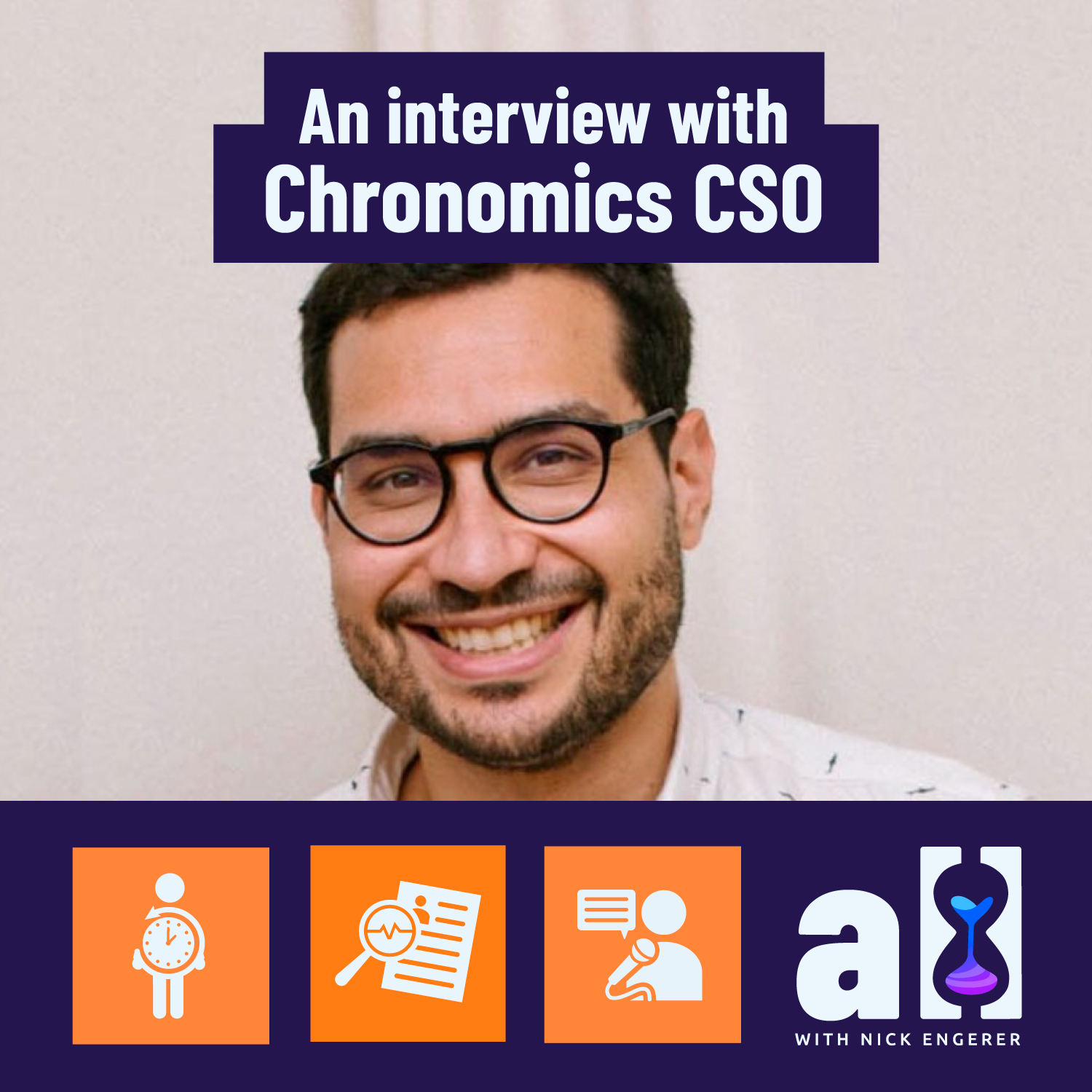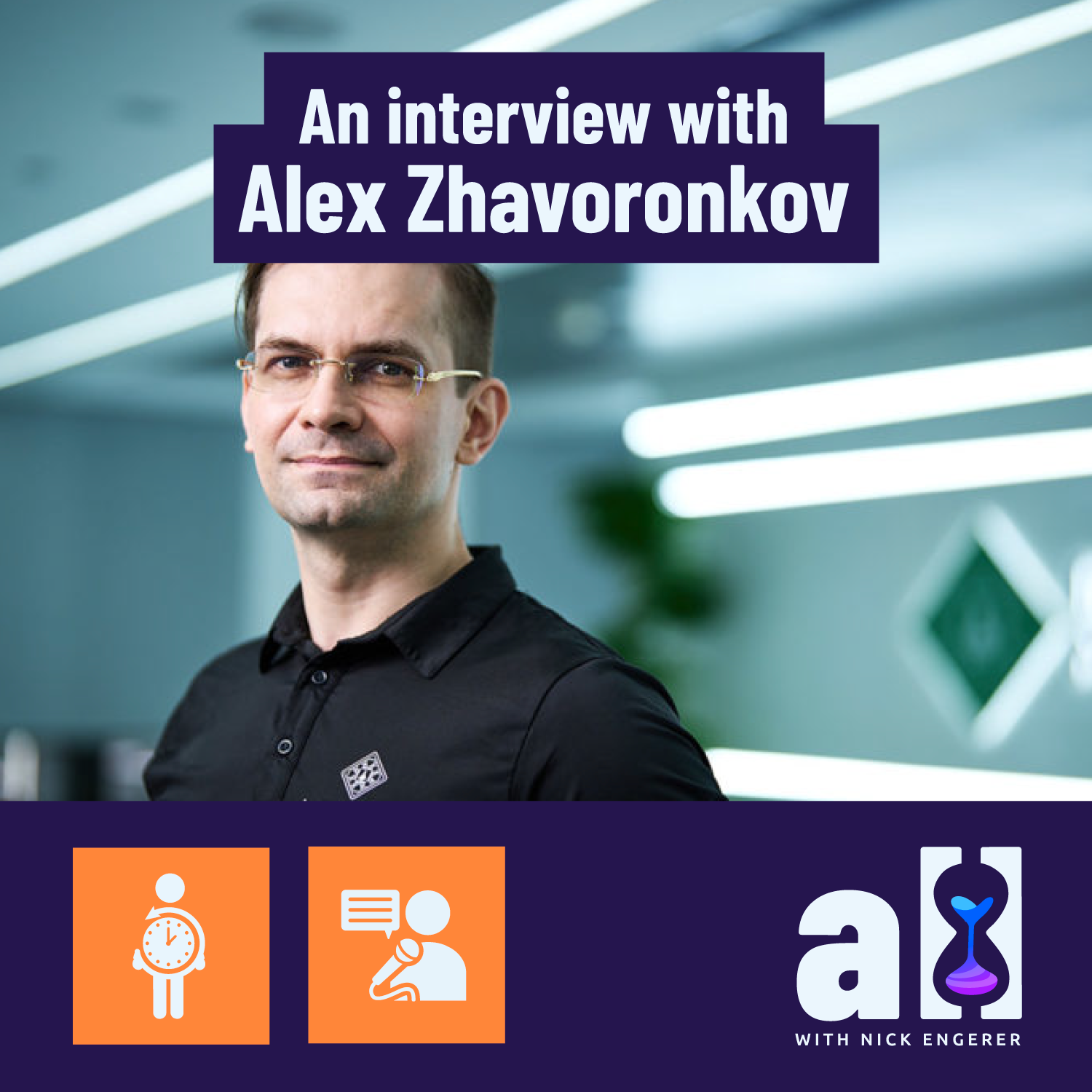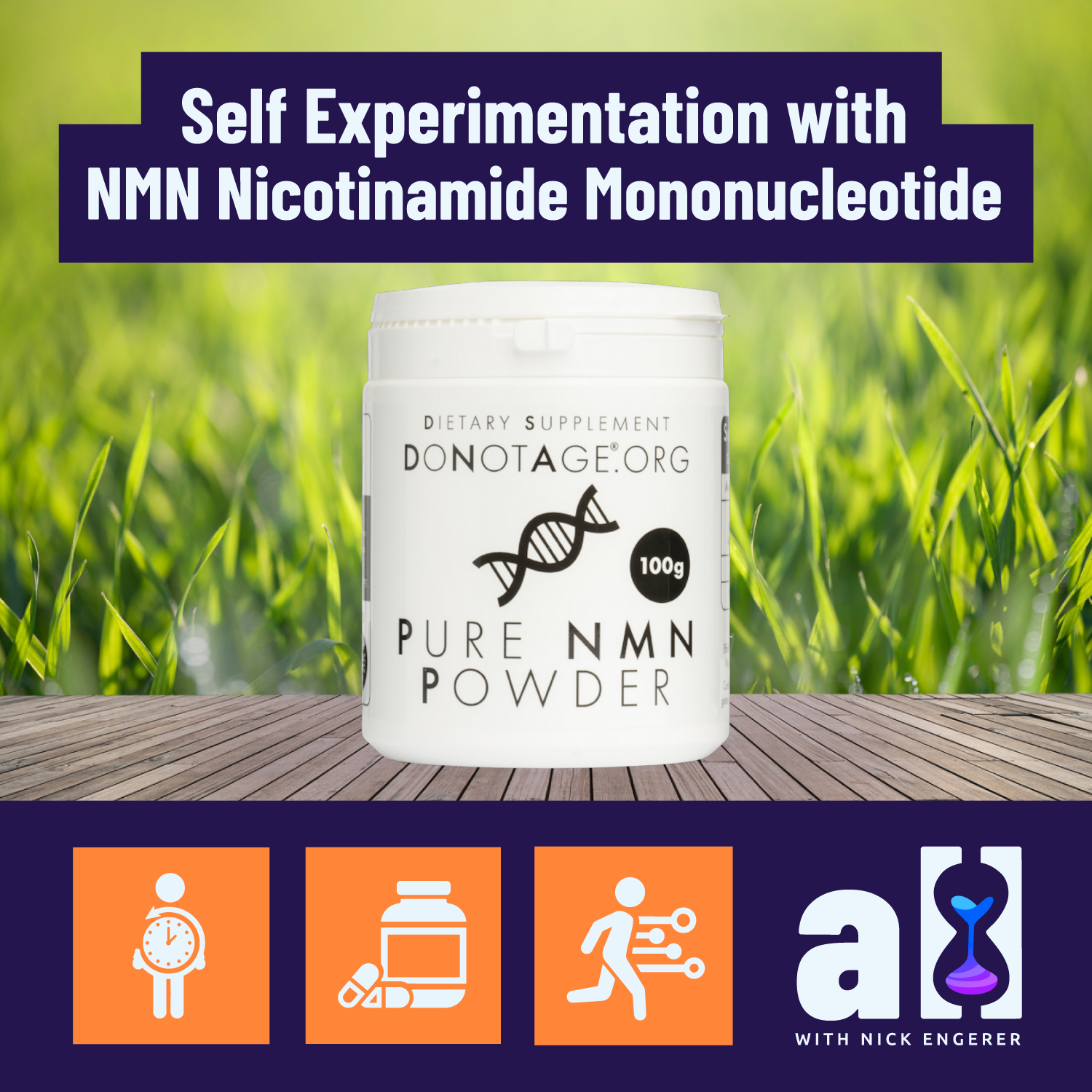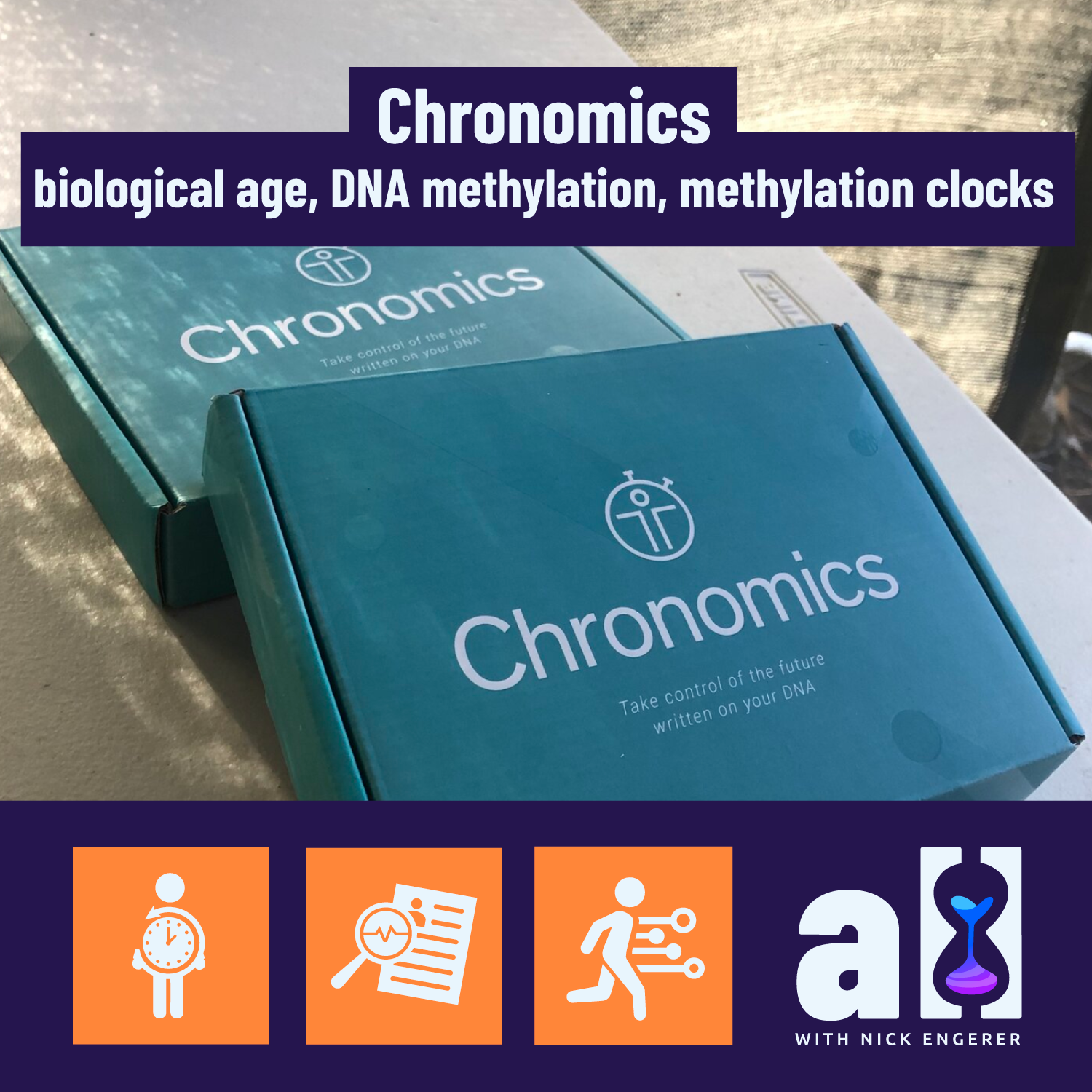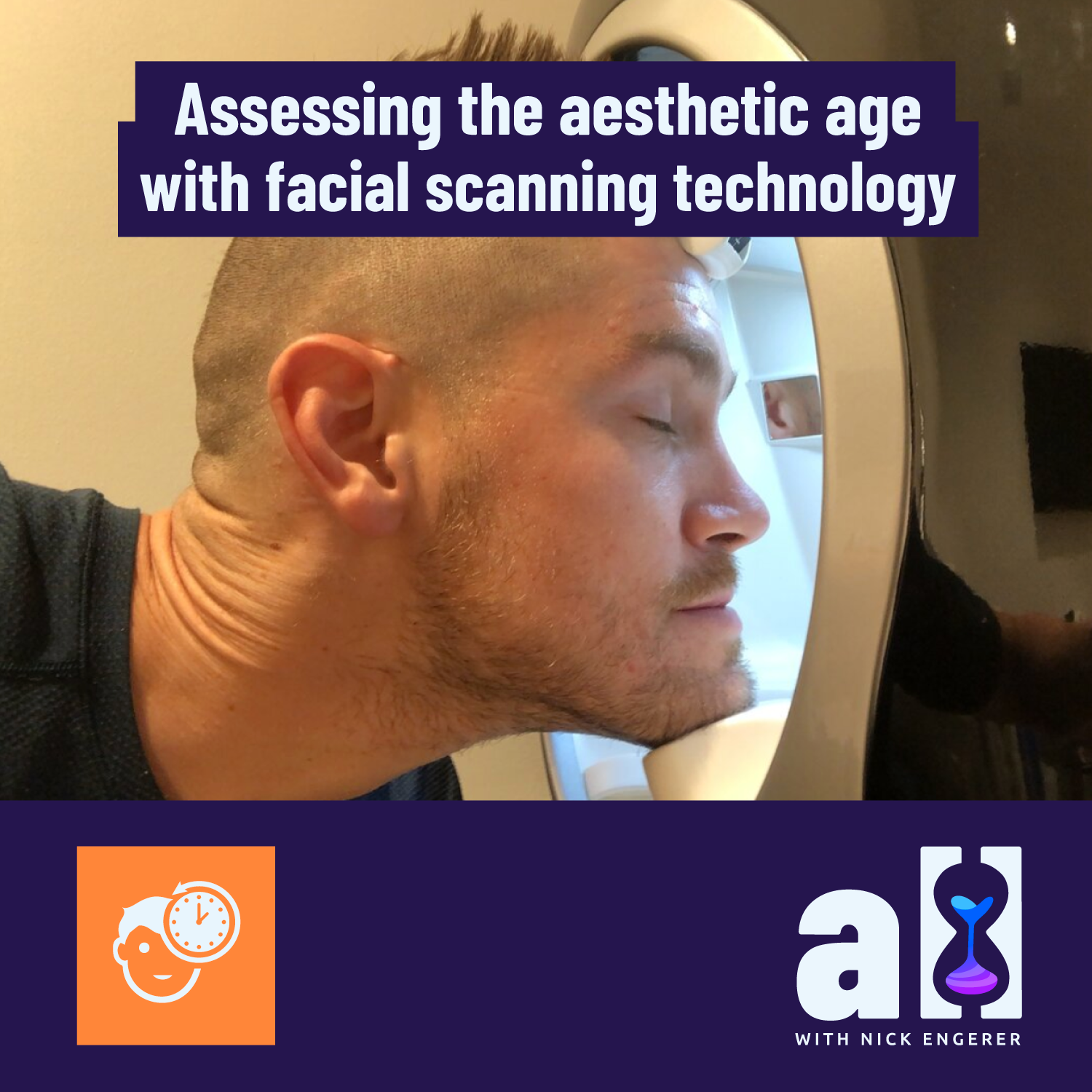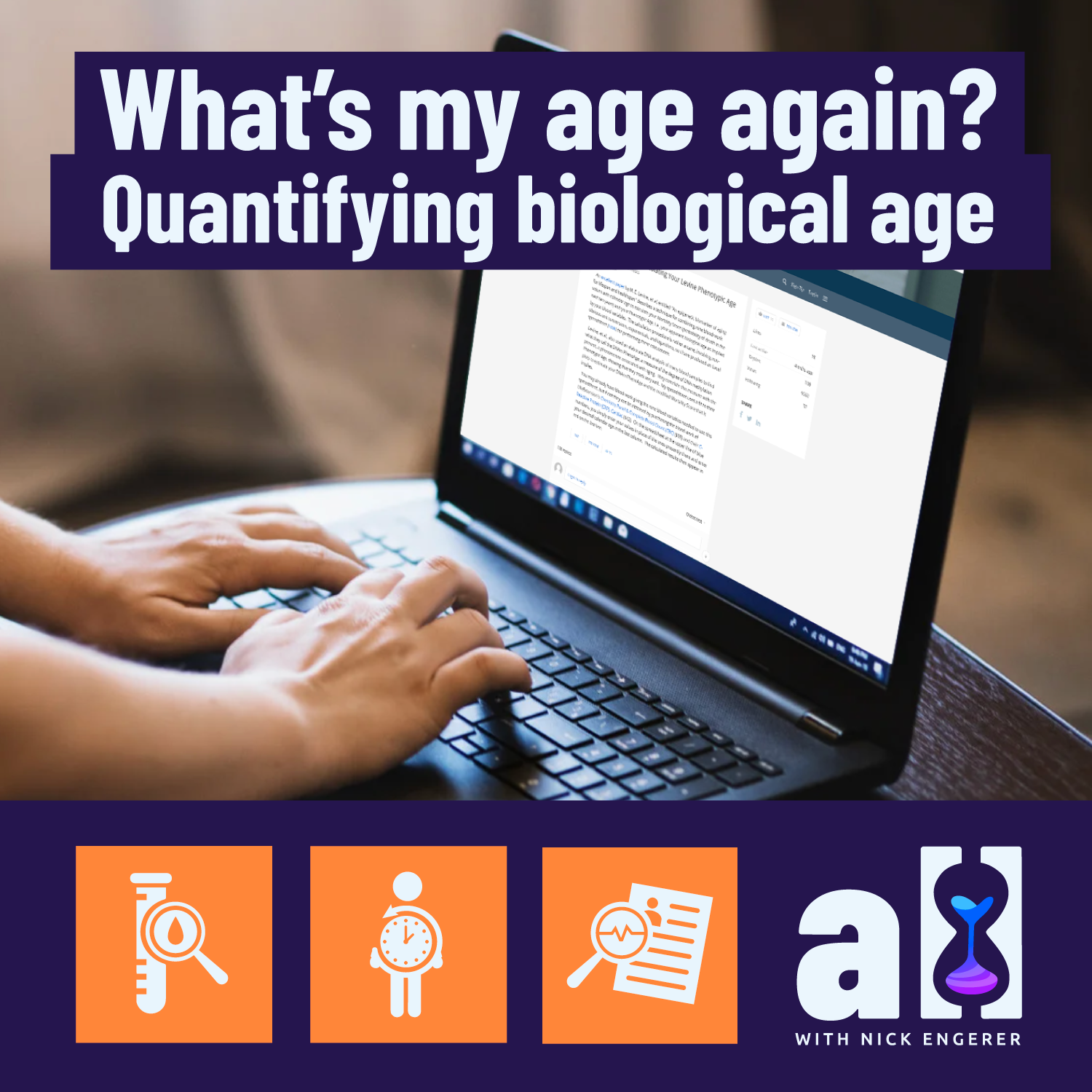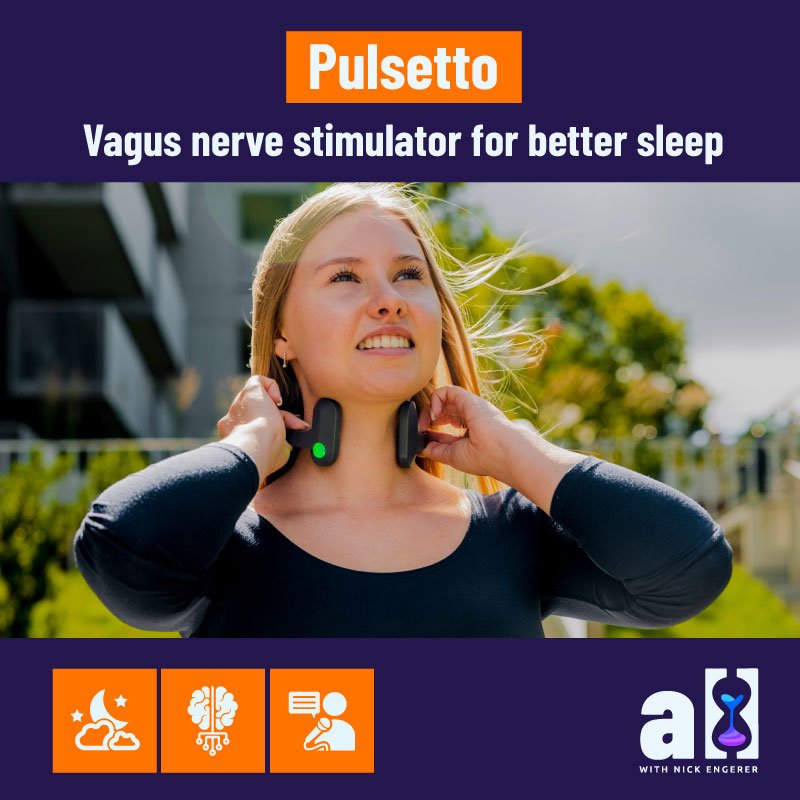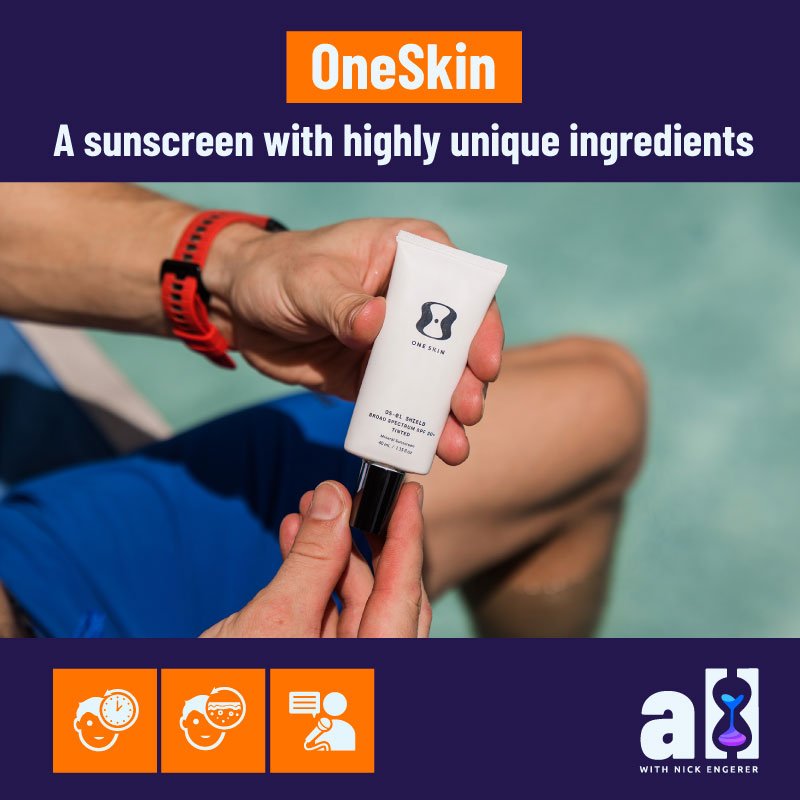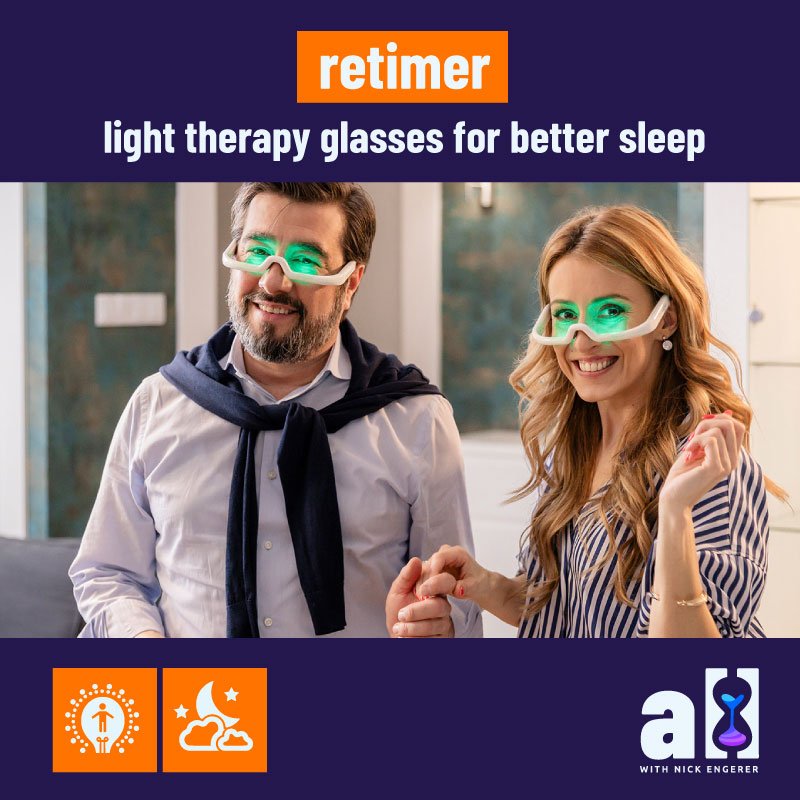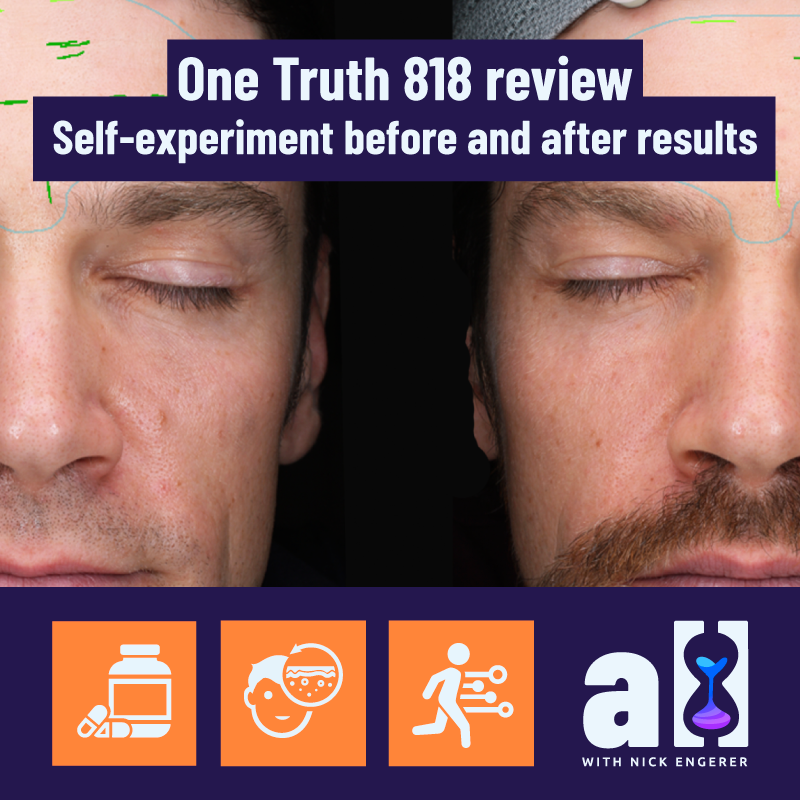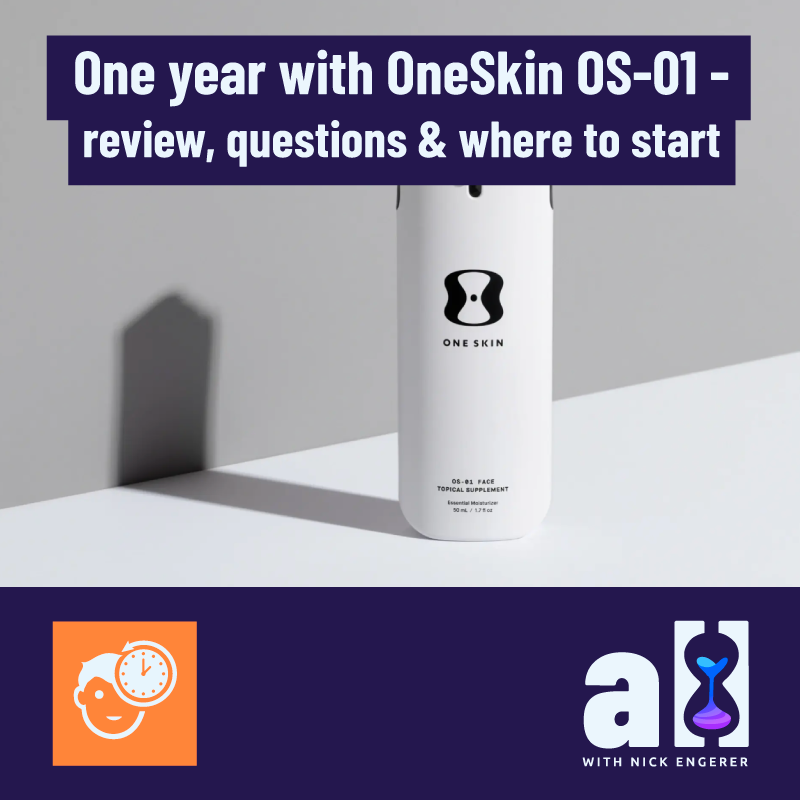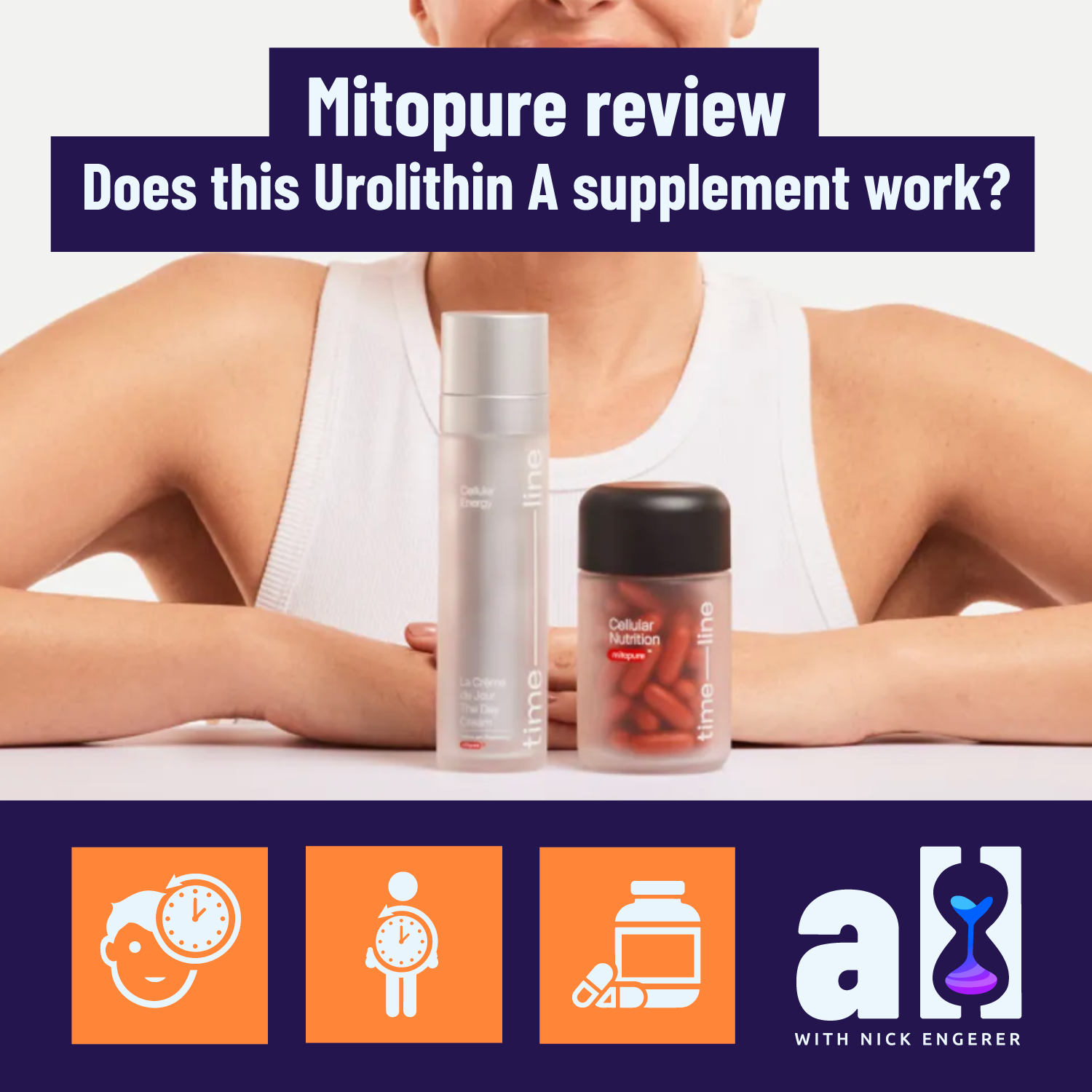Biological age estimates through epigenetics: An interview with Chronomics CSO
Measuring your biological age
Measuring your biological age is quickly working its way into the mainstream.
Just 12 months ago, we compiled our first comprehensive list of all of the companies offering a biological age test, and since that time the list of offerings has more than quadrupled in size. (Did you see our post on 3 free ways to test your biological age?)
A Longer Life believes the strong growth in offerings to be driven by our collective curiosity and drive for personal optimisation. But there are two key questions to be answered: 1) How should I use these test kits? and 2) Which test kit should I use?
Let’s answer those!
How to use biological age test kits
Biological age is a very unique and comprehensive way to check in and see “how am I doing with my health?”, or for those of us seeking to extend our healthspan - checking in with “how old am I biologically?” or “how fast am I aging?”.
The prospect of measuring our biology in this way, let alone halting or even reversing that number, is tantalising.
Use biological age testing kits, like GlycanAge, to make a change to your lifestyle and see if it improves your biological age!
The thinking goes - If I can track my biological age over time, perhaps I can use the result to run self-experiments and to determine what things I can do to improve this number.
This could be through lifestyle changes (like a change in diet), longevity supplements (like NMN), or a variety of other interventions - each of which (with a bit of careful, but relaxed experimental design) can show each of us what works best for our individual biology.
This ‘test yourself and see what works’ messaging is certainly what those now offering biological age test kits want you to believe.
But is this just clever marketing, or does it actually work?
Our Founder Nick set out to investigate, and has now shown this can indeed be done - twice! Once with a longevity supplement protocol with NMN and also with a changing his diet to include more diversity of plants.
If you’d like to see an example of how to set-up a self-experiment and use a biological age test kit in a useful way, check-out either of those examples.
Choosing the best biological age test
Over to the second important question: “Which test kit should I use?” or “What is the best biological age test kit available?” (for your own self-experiment!).
It is not easy to draw a simple conclusion, as this question is multi-faceted. The answer to which kit is best? depends on what intervention you’d like to try. If your keen to change your exercise regimen, tweak your diet or improve your sleep over the course of a few months - you might want to choose the GlycanAge test kit.
Learn more about why in our interview with world glycan expert Gordan Lauc here. (Hint: it has to do with how quickly the biological age score can be changed)
But if you’re looking for the ‘best answer’, meaning the ‘most accurate’ result, and don’t plan to test before and after an intervention - which test kit you should use could be different.
Let’s discuss what this means in a bit more detail.
To answer ‘what is the best biological age test kit available?’ question, we will turn to an expert on these matters - using the framework provided to us by Deep Longevity CLO and Insilico Medicine CEO Alex Zhavoronokov.
Alex’s message: look to the test kit’s accuracy and representativeness.
So as our first checkpoint - any biological age estimation service should provide information on the accuracy of the model they have developed, including the size and representativeness of the population (data) it was trained and tested on.
Think of accuracy as: how often is the result correct when it tries to predict someone’s age based off their blood or saliva sample?
Think of representativeness through this lens: human biology is complicated and diverse, so does the dataset the biological age clock was constructed with represent me? (e.g. ethnicity, age, gender, etc).
The BEST BIOLOGICAL AGE TEST KIT is Chronomics
We recently introduced UK based Chronomics, a company specialising in measuring, quantifying and interpreting the human epigenome.
As covered in our most recent post (Advances in DNA methylation based biological age clocks), using the epigenome has recently emerged as the most robust way to estimate biological age.
This is to say, it is the most comprehensive and accurate way to estimate biological age currently available at the time of writing.
While this could change with the emergence of new technologies and/or methods, we believe this will continue to be the case well into the future.
It will likely then come as no surprise to the reader that we have selected Chronomics as the ‘best’ option for estimating your biological age.
Chiefly, we can chalk this up to the fact that Chronomics has had about a five year head start on nearly all of their competition.
But more specifically, let’s look at the numbers - simply put, as of early 2021, they have the most accurate biological age clock (mean error less than 2 years), with the most diverse and representative sample set of user (10,000+).
Want to dive deeper? Keep reading to see our interview with Chief Scientific Officer Dani Martín-Herranz diving into the details of what this means, and how Chronomics created such an amazing biological test kit.
We also recommend
A Longer Life recommends “GlycanAge”, which provides a detailed picture of the inflammation status of your body. Check out their kits here - and use the code “LONGEVITYBLOG” to save 15%.
You can also read about how our Founder Nick improved his GlycanAge by 6 years by eating more plants!
A Longer Life also recommends trying out this updated kit from DoNotAge. We’ll be covering the technology powering this option soon.
Use “LONGEVITYBLOG” to save 10% on your order.
Chronomics Interview with DANI (CSO)
A Longer Life (ALL): Dani, thanks for speaking with A Longer Life. Let’s start with my own curiosity - what happened to the generously sized vial of saliva our Founder Nick shipped across the world from Byron Bay to the UK? How does Chronomics turn his spit into valuable longevity data?
Dani Martín Herranz (DH): [Laughs], firstly, thanks for having me. We used Nick’s saliva to extract his DNA from the cells contained within it. We use a number of preparation steps to isolate your DNA, and then undertake a ‘library preparation’ step in order to make the DNA readable for our sequencing machines.
ALL: This sounds like we’re now ready for the specialised ‘bisulfite sequencing’ method you employ in order to read the epigenome, is that correct?
DH: Yes! Once we have the DNA isolated, Chronomics can then prepare the methylated portion of the genome (a key part of the epigenome) to be analysed. To do this, we treat the sample with sodium bisulfite; which allows us to clearly identify the methylated points of the genome
It’s more saliva than it looks like! #generousvial
How does epigenetic data produce a biological age?
ALL: So these must be the ‘cytosine’ letters of our DNA, which are the ‘CpG’ sites we often hear about from the scientists studying longevity and epigenetic aging. How many of these are there?
DH: That’s correct. There are over 28M CpG sites in the human genome. With the bisulfite sequencing approach, Chronomics can see if a CpG site is either methylated or not in a specific DNA strand.
ALL: 28M CpG sites in a genome of 3 billion base pairs - how many of these sites contain valuable information for interpreting our biological age?
DH: Our technology looks at 5.6M cytosines at high depth, meaning we are reading and then re-reading each point up to 30 times.
ALL: That’s impressive! Let’s move this conversation along to the main topic - How is DNA methylation used to predict biological age? Outline the process at a high level for us
DH: Since the work of Steve Horvath and others in 2013, we’ve known there are specific positions in the DNA (known as CpG sites, places where normally DNA methylation occurs in mammalian genomes) where DNA methylation levels change very consistently with age.
For example, there are CpG sites where we accumulate more DNA methylation in our cells and tissues, and there are CpG sites where we lose DNA methylation with age. These changes can be relatively big, in some places, and in others, smaller. These changes can be leveraged to train machine learning models that can measure biological age.
Does a saliva sample represent the biological age of the rest of the body?
ALL: You’ve just mentioned how these changes in DNA occur across ‘cells and tissues’. Many members of the A Longer Life readership have asked - why that methylation changes in DNA in the saliva are representative of those occurring in a kidney or liver cell, for example?
DH: Most of the work on biological age and DNA methylation has actually been done in blood. If you look across the many epigenetic clocks and studies that have been developed, blood used to be considered the ‘gold standard’.
Epigenetic changes in blood have also been associated with a lot of clinical endpoints - many different diseases, effects of lifestyle, environmental factors, etc. However, blood is not such a pleasant tissue from a consumer point of view - many people don't want to complete a fingerprick or blood draw.
Chronomics wants to make the journey of accessing actionable biological insights as user friendly as possible. This also means considering logistics and sampling. From the very beginning, we pushed to have saliva as one of the tissues that we can process as part of our workflows for biological age.
What’s interesting about saliva, is that it is actually not that dissimilar from blood. Saliva, like blood, is made up mainly of immune cells that infiltrate from the immune system.
We’ve also come to understand from research of Steve Horvath and others, that many age-related changes in the epigenome are conserved across tissues. Meaning, what we observe in the saliva, may be representative of other tissues throughout the body.
We don’t yet know why this is the case, but this fact is tremendously useful for representing to a certain extent your whole body from a single tube of saliva.
How accurate is Chronomics’ biological age test kit?
ALL: In your company technology white paper, you report that the Chronomics epigenetic clock has a median absolute error (MAE) of 1.97 years.
This is quite impressive, and outperforms other widely-used epigenetic clocks (e.g. Horvath’s multi-tissue clock MAE=3.6 years) and even more recent models such as the Deep Longevity clock A Longer Life covered in our previous post.
We have several questions on this topic - first, explain to us what you've done to establish that accuracy? For example, give us some details on the training and test group look like? What's the test group that you've done in terms of the volume and representativeness of the population?
DH: We have integrated many public datasets and combined that with data from our own users. Our main focus is on tissue samples which are relatively non invasive - blood and saliva. And we are also taking into account different technologies.
With epigenetics, we're not yet in the order of millions of samples, but we are on the order of 10,000. I think it is also important to keep in mind one thing that people normally miss - when it comes to biological age, you can overfit the models.
For example, if you work with many many samples, and if you become obsessed with reducing only the error that is associated with the prediction of chronological age.
There are papers that show that if you start to perfectly capture chronological age prediction, and you reduce that error a lot, you also lose the ‘biological age’ component of the prediction, which is the one associated with clinical outcomes.
So it's a bit of a complex problem where there are many definitions of biological age, but there is not yet a ‘goldstandard’ for which we're optimizing for (as seen by the different types of epigenetic clocks available).
Probably the most useful and actionable proxies are those that are mapped to specific age-related medical outcomes.
Why is chronomics the most accurate biological age test kit?
ALL: Following up, while respecting the complexity of the problem, why are you able to produce such an accurate biological age estimate?
DH: At Chronomics, we are also taking into account different technologies to build our models. So not only methylation arrays, which is what a lot of people out there have used, but also next generation sequencing data, which is what we mainly work with for our internal processes.
When you combine all of that, and a variety of different machine learning approaches, that is how we managed to get the median absolute error down to < 2 years, and that is an evolving number over time.
Part of that error will reflect true biological age variation in the population and part of it technical variation due to limitations in the technology.
ALL: Could you elaborate further on how the biological age model works? You mentioned machine learning before.
DH: One challenge we have had to solve is that we have millions of epigenetic features (CpG sites) from a given sample with our sequencing platform. These are the measurements of the DNA methylation status across the genome.
If we use a methylation array, we’ll have hundreds of 1000s of data points. In other words, you have a problem of high dimensional data.
Essentially, we are trying to find the best features of the best places in the genome to predict biological age (or other biomarkers). This problem lends itself well to elastic net regression, for example,and there are now many groups trying different types of deep neural networks.
So what we've done is benchmark different approaches internally and completed a robust feature selection process using many different types of machine learning algorithms. From there, we have come up with our own machine learning pipeline to make the biological age estimate.
 |
Does the chronomics test kit represent me?
ALL: Thanks Dani, let’s pivot away from accuracy and over to relevance.
In a previous A Longer Life interview with Alex Zhavaronkov of Deep Longevity, he pointed out how we must question both the accuracy and the relevance of a given biological age model.
Which genetic backgrounds is the Chronomics biological age model relevant to?
DH: This is a huge issue across all the ‘omics’ and health data in general. Overall, the healthcare ecosystem has very biased data sets towards Caucasian populations in general, and epigenetics is unfortunately not an exception to that.
This is unacceptable and we need to do better if we don’t want health inequality to become even bigger.
At Chronomics we are very much aware of this issue, and proactively try to solve that problem. In the case of epigenetics, different genetic backgrounds can lead to slightly different predictions for epigenetic biomarkers.
When we build our biomarkers, we try to correct for this as much as we can, so we can maximize the chances that the biomarkers work across different populations.
One thing that benefits us with respect to this problem is that Chronomics is a global company. We collect data across many countries and genetic backgrounds, testing our predictions, across these different backgrounds.
But obviously, I'm sure we can do better at this, and we will keep improving.
ALL: So in summary, would you agree it's fair to say there's a bias towards Caucasian populations, but that does not mean people from other ethnic backgrounds can’t trust the result. Is that fair to say?
DH: There is a bias towards Caucasian populations at the level of the dataset, but in terms of the epigenetic biomarkers that we have built, we've ensured that they work across populations so everyone can access them.
How do you use biological age tests to improve health?
ALL: That’s a nice clear answer, thanks. Let’s move on to the ‘actionable’ insights a biological age estimate from Chronomics may inform.
Naturally, the reader who is considering accessing a Chronomics test kit wants to know, if I take this biological age test, what actionable information will I receive? What is a biological age estimate to teach me about myself?
DH: Many people read A Longer Life, because they are interested in reducing the speed at which they are aging. The challenge is that aging is quite a complex phenotype to measure at the molecular level and without accurate biomarkers of aging there is no way to know if specific interventions are working or not to reduce aging rate.
A biological age result provides people with the tools to essentially to decide if the aggregate of all of what they’re doing seems to be working.
While we have long been good at quantifying a very specific aspect of health, for example - do I have high cholesterol or not - which is obviously a good proxy for cardiovascular disease, these measures may be missing other aspects of our health.
Biological age is a very good holistic measurement of your overall health status, and represents how well in general, you're doing with the aging process.
It represents how your entire lifestyle is interacting with your genetics to control your aging rate.
Biological age is also very valuable to track over time, and see whether the different interventions that you're trying are working or not.
This is why it is ‘actionable’, because we observe that depending on what people do, that value will change - better lifestyles lead to better biological ages.
There is no point in giving people access to biological data that they can not improve through positive behavioural change.
ALL: This actually brings us to a repeat question that many A Longer Life readers have. We've received emails upon emails about this - simply put, folks are scared to know their biological age. Mainly because they're afraid that they will receive a result 5-10 years older than their chronological age.
What do you say to people who are afraid of getting that number?
DH: I would say that, in order to have positive impact upon our health, we need to be courageous in that way. Everyone of us is scared to receive medical results we don’t like. It is much easier to just wait until something really bad happens.
But I think that anyone who is going through a difficult chronic disease wishes they would have detected and acted earlier. We need to become much more proactive towards our health and measure pre-disease states.
It is important to make a very strong distinction here between receiving certain types of genetic insights versus epigenetic insights.
Someone telling you that you have a specific genetic variant that is not ‘actionable’ (something that you cannot change or influence the outcome through lifestyle changes) and that gives you an increased risk to a specific disease is probably not very useful (and for some people may be even depressing).
The epigenetic biomarkers that we build, on the other hand, capture actionable aspects of our health.
What that means is that with epigenetic insights, you can always do something around it. It is a tool for positive behavioral changes.
It can be used to guide you through that journey of improvement, a different type of mindset where you can actually change those results.
“In order to have positive impact upon our health, we need to be courageous in that way. Everyone of us is scared to receive medical results we don’t like. It is much easier to just wait until something really bad happens”
ALL: Dani, given what you’ve just discussed, is the directional nature of one’s biological age (going up or down) more important than the absolute value?
In other words, if we receive our first biological age result, it is actually the second one, following some intervention, which provides us the actionable information? (i.e. those lifestyle changes or given longevity protocol made a positive change, so keep it up)
I’m currently measuring my biological age every ~6-9 months, in between intervention protocols to see what ‘works’ for my biology.
DH: You are absolutely right when you say that we should not become so obsessed with the absolute value of our biological age.
It is more important to look at the directionality, how your biological age is changing over time and how your aging rate changes as a function of your lifestyle.
When you take your first biological age test you are de facto comparing yourself against a population of individuals.
When you take your second epigenetic test, we can start to compare you against yourself and build your digital twin (or N=1 experiment). And, as you probably would imagine, you are your best control.
How often should you test biological age?
ALL: How often should we measure biological age, Dani? Because if we're looking at a signal over time, is it something we should measure every six months, every 12 months? What does your experience suggest?
DH: We normally recommend people to measure every 6 to 12 months. Before that, it's difficult to see statistically significant changes.
This is mostly because the aging process is relatively slow and most anti-ageing interventions are not that powerful yet.
However, how quickly biological age can change varies a lot from person to person. There is a lot of variation between people and the types of interventions that they are making.
Also, someone with a very good biological age result (younger) will probably have a more difficult time further reducing their result.
ALL: Did you just suggest that it is easier to change an accelerated age, as in someone who is biologically older than their chronological age, than it is to get biologically younger when your biological age is low?
DH: It's always dangerous to generalize in biology, but there is a trend. Think of it as this - the repertoire of basic things that someone can do to improve is broader for someone with a poor biological age result.
If someone is having a horrible diet, a horrible exercise routine - those people will likely have higher biological ages, and therefore they will have more opportunity to improve that biological age than someone that is already doing those things.
ALL: Dani, as we close out this interview, help us understand your vision for the future of quantifying biological age. Where is this going to take us in the next five to 10 years?
For example, Alex Zhavoronokov of Deep Longevity spoke to the A Longer Life about “Longevity as a Service”. What’s your take?
DH: I agree with Alex in those regards. Maybe at Chronomics, we wouldn't exclusively frame it as “Longevity as a service”, but more as “Biomarkers as a service” or “Actionable biological insights as a Service”.
We provide access to complex and actionable biological data that was previously hidden in the lab. Our goal is to bring it out and make it very easy to sample and access - making the entire journey of accessing that information as seamless as ordering a book online.
Bringing the tech and digital revolution also to biological data. And this needs to happen if we truly want to move to a preventative healthcare paradigm.
Epigenetic information plays a very key part in that mission and it is also very close to our hearts. But the name of the company, as you can see, is not “epi-something”.
It's ‘Chron-omics’, which means ‘large biological data over time’.
We're on a mission to offer people across the healthcare ecosystem, all sorts of actionable biological data. So not only epigenetics, but also for example, metabolites from blood or even COVID-19 testing.
That's really what we are passionate about - to make the unseen, actionable, and make it easier for everyone to access those insights and democratize them.
January 2022 Update: We’ve worked with Chronomics to make their biological age testing kits available to the public again! Price check these kits & place your order at the below link:
Interested in other biological age test options?
Follow me on Twitter for more Longevity & Biohacking info
-
RT @nickengerer: Join a team, do a sport. Staying fit is easier with a clear purpose Bonus: you just might live longer Pic: Byro… https://t.co/L5yHxHJXas
-
Calcium AKG Alpha Keto Glutarate Supplement Review https://t.co/K7keDM3Lyn
-
Mitopure Review - Does this Urolithin A supplement actually work? https://t.co/0Y6Bx4yA7h
-
How Fast are You Aging? A Biological Age Test for Rate of Ageing with Ryan Smith of Trudiagnostic (Part 2) https://t.co/5SZW3Or6JJ
-
What is the Most Accurate Biological Age Test? An Interview with Ryan Smith of Trudiagnostic (Part 1) https://t.co/wdIxtTVeq0
-
One Skin Review - Self-Experiment Before and After Results with OS-01 https://t.co/3hqzLtfVa3
-
Regrowing Knee Cartilage and Restoring Joint Health Naturally. An Interview with Reviiv Light CEO Forrest Smith - P… https://t.co/O671LROvzw
-
RT @nickengerer: 90 years old, what to do? A half Ironman, why not? Hiromu Inada now holds the record for the oldest ever competi… https://t.co/wv7NPhslUM
-
One Skin Before and After - Skin Aging in the Future: An interview with OneSkin CEO Dr Carolina Reis - Part 2 https://t.co/RlLlqRurT6
-
RT @Do_Not_Age: Our new ingredient, Spermidine, reduces amyloid plaques and inflammation of the brain in rodents Check our Science… https://t.co/RgehOqmVtf
FDA & TGA DISCLAIMER
This information is intended for educational purposes only and is not meant to substitute for medical care or to prescribe treatment for any specific health condition. These blog posts are not intended to diagnose, treat, cure or prevent any disease, and only may become actionable through consultation with a medical professional.


